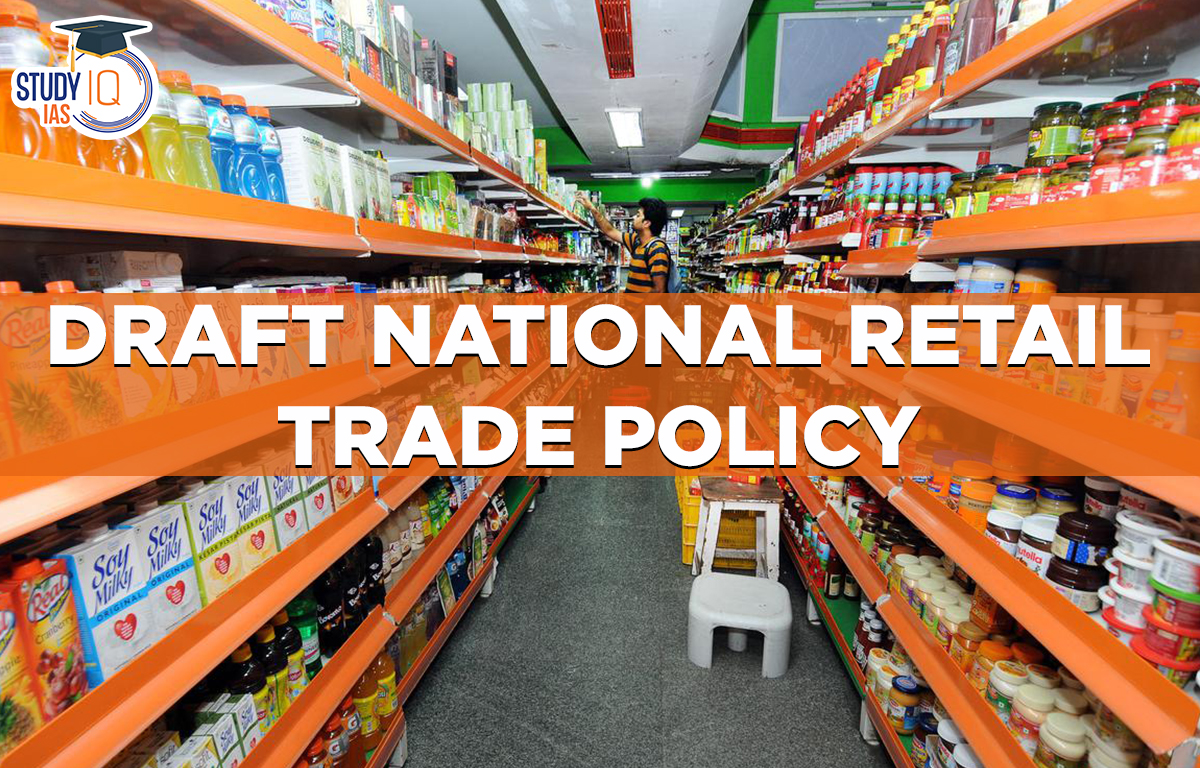Table of Contents
Context: The Department for Promotion of Industry and Internal Trade (DPIIT) has sought the views of 16 departments and ministries on its Draft National Retail Trade Policy.
About the Draft National Retail Trade Policy
- Aim: The policy would focus on formulating strategies to provide a globally competitive and sustainable environment for the overall development of retail trade through targeted efforts.
- Objectives of the policy:
- Ensuring easy and quick access to affordable credit.
- Facilitating modernization and digitization of retail trade by promoting modern technology and superior infrastructural support.
- Development of physical infrastructure across the distribution chain.
- Promotion of skill development and improve labour productivity.
- Providing an effective consultative and grievance redressal mechanism for the sector.
What is Retail Trade?
- Retail is the sale of goods and services to consumers, in contrast to wholesaling, which is sale to business or institutional customers.
An Overview of India’s Retail Industry
- Market size: India’s retail sector is worth $836 billion in FY 2022 and currently has the 4th largest retail market in the world.
- Contribution: Indian retail industry accounts for over 10% of the country’s gross domestic product (GDP) and around 8% of the employment.
- Future prospects:
- The retail sector in India is expected to reach a whopping US$ 2 trillion in value by 2032, according to a recent analysis by the Boston Consulting Group (BCG).
- According to a report of CII-Kearney on retail, a cohesive national retail policy can help generate 30 lakh more jobs by 2024.
- Key Growth Drivers:

- Composition: FMCG, apparel & footwear, and consumer electronics are the largest retail segments, constituting 65%, 10% and 9% respectively of the retail market
- Global rankings:
- India ranked No. 2 in Global Retail Development Index (GRDI) in 2021.
- India is the world’s fifth-largest global destination in the retail space.
- India has the third-highest number of e-retail shoppers (only behind China and the US).
Major Challenges in India’s Retail Industry
- Unorganized sector: The Indian retail sector is highly fragmented and the unorganized sector has around 13 million retail outlets that account for around 96 % of the total Indian retail industry.
- High complexities: A number of laws, compounded by state-level variations in implementation, create immense complexity for retailers, especially those with a pan-Indian footprint.
- This makes it imperative for retailers to ensure a comprehensive pan-India policy is in place.
- Lack of Technology Adoption: The availability, feasibility and adoption of technology are the major challenges faced by the Indian retail outlets.
- Lack of Infrastructure and Logistics: Inefficient infrastructure and logistics is resulting in inefficient processes.
- Scarcity of Skilled Workforce: The Indian organized retail players spend more than 7% of the sales towards personnel cost. The retail industry faces attrition rate as high as 50% which is very high as compared to the other sectors.
Government Schemes for Promoting the Retail Sector
- Finance: PM Mudra Yojana, PM Jan Dhan Yojana
- Infrastructure status to Warehousing and logistics, multi-modal logistics parks, Smart Cities Mission etc.
- Digital: ONDC (Open Network for Digital Commerce), GeM (Government e Marketplace) portal etc.


 Serious Fraud Investigation Office (SFIO...
Serious Fraud Investigation Office (SFIO...
 Article 142 of Indian Constitution, Sign...
Article 142 of Indian Constitution, Sign...
 Pakistan-Occupied Kashmir (PoK): History...
Pakistan-Occupied Kashmir (PoK): History...





















